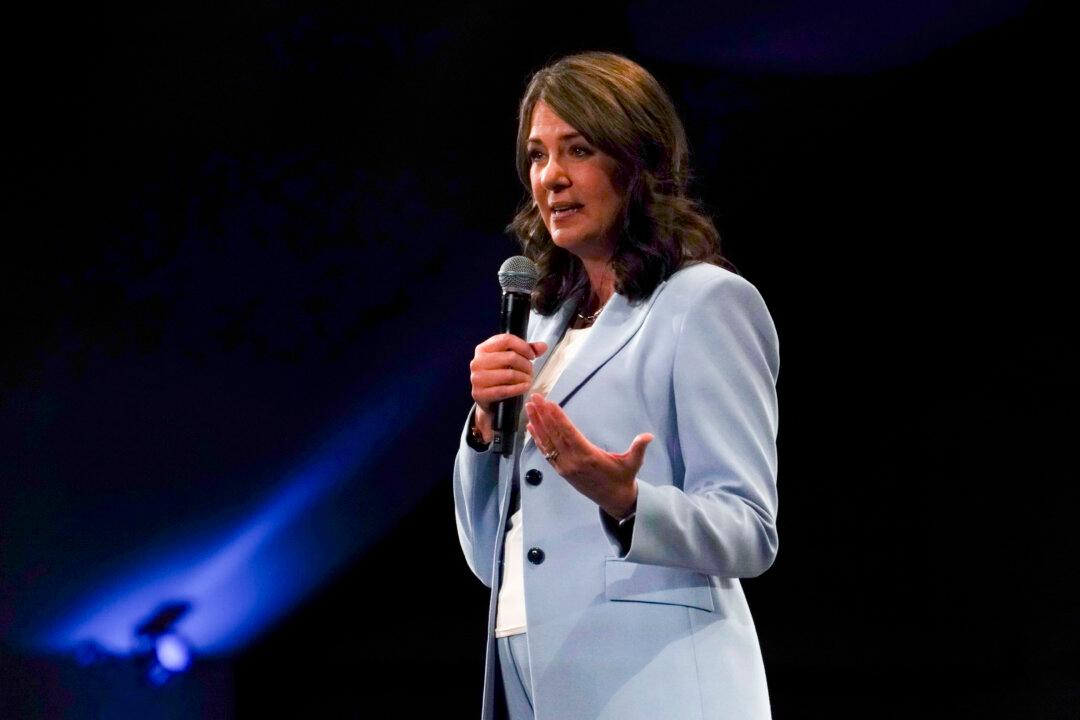U.S. Ambassador Pete Hoekstra said he hopes a deal on tariffs will be reached soon between his country and Canada, but suggested some tariffs could still remain in place afterward.
Hoekstra said he’s “not sure” the U.S. tariffs on Canada will be “totally removed” after the host asked if achieving a certain benchmark or meeting specific criteria would lead to such an outcome.
Canada is under three different sets of U.S. tariffs. The first set was imposed due to border security and fentanyl trafficking concerns and also applies to Mexico. Goods covered by the United States-Mexico-Canada (USMCA) free trade deal have been exempted. Canada is also affected by the universal tariffs on steel and aluminum, and the tariffs on autos and car parts. The auto tariffs also come with some free trade exemptions.
The United Kingdom had been hit by the “reciprocal” tariffs announced by U.S. President Donald Trump in April, similar to many other countries. Unlike Ottawa, London did not impose retaliatory measures on Washington.
The White House said a number of other countries are also working to strike trade deals with the United States.
Hoesktra said he is hopeful Canada and the United States can come to an agreement “relatively quickly,” while adding there are some “tough issues to negotiate and to talk about.”
Hoekstra repeated Trump’s comment about the USMCA being “transitional” and said discussions on what needs to be changed could now take place.
International Trade Minister Dominic LeBlanc suggested the negotiations to take place are not related to the USMCA.
“They haven’t indicated that to us, but they are interested in discussing how Canada and the United States can work on economic and security issues,” LeBlanc said.
Hoekstra described Trump’s approach to negotiations as a “holistic” one that considers tariffs, the opening of different markets, and non-tariff trade barriers such as government subsidies.
The U.S. administration has criticized Canada’s supply management system for dairy and poultry products, as well as its Digital Services Tax principally aimed at U.S. tech giants.
Defence Spending
Hoekstra, who held the position of U.S. ambassador to Holland during Trump’s first term, noted the president’s insistence that Holland adhere to NATO’s defence spending target of 2 percent of GDP.“That was a key priority for the president back then, and it’s still a key priority to the president,” he said. Holland exceeded NATO’s spending guideline in 2024 with 2.05 percent.
Canada was one of eight members of the military alliance not meeting the 2 percent guideline last year. Prime Minister Mark Carney pledged during the election campaign to reach the target by 2030, two years earlier than his predecessor Justin Trudeau.
“The president has revitalized international security, revitalized NATO, and us [pulling] our full weight in NATO ... that will be part of it,” Carney said.
Carney insisted Canada would never be for sale during the meeting, with Trump responding “never say never.”
While Trump spoke at length about making Canada the 51st state with Carney present, Hoekstra told Global News that “at least as far as I’m concerned,” the Trump administration has “moved beyond the 51st state.”
“The president can bring it up, but it’s clear, if that discussion ever comes up again, it will be between the president and the prime minister,” he said. He added the two had expressed their views “eloquently” and “forcefully,” but now it’s time to “move on.”
Hoekstra was part of the group of officials who attended the lunch meeting between the leaders after they spoke to media in the Oval Office.
He said the two showed a “high level of respect” and “established a personal bond.” Some of the issues that were discussed included national security, fentanyl, the Arctic, and China, according to Hoekstra. He added the discussions were “forward looking” and not about laying blame.






